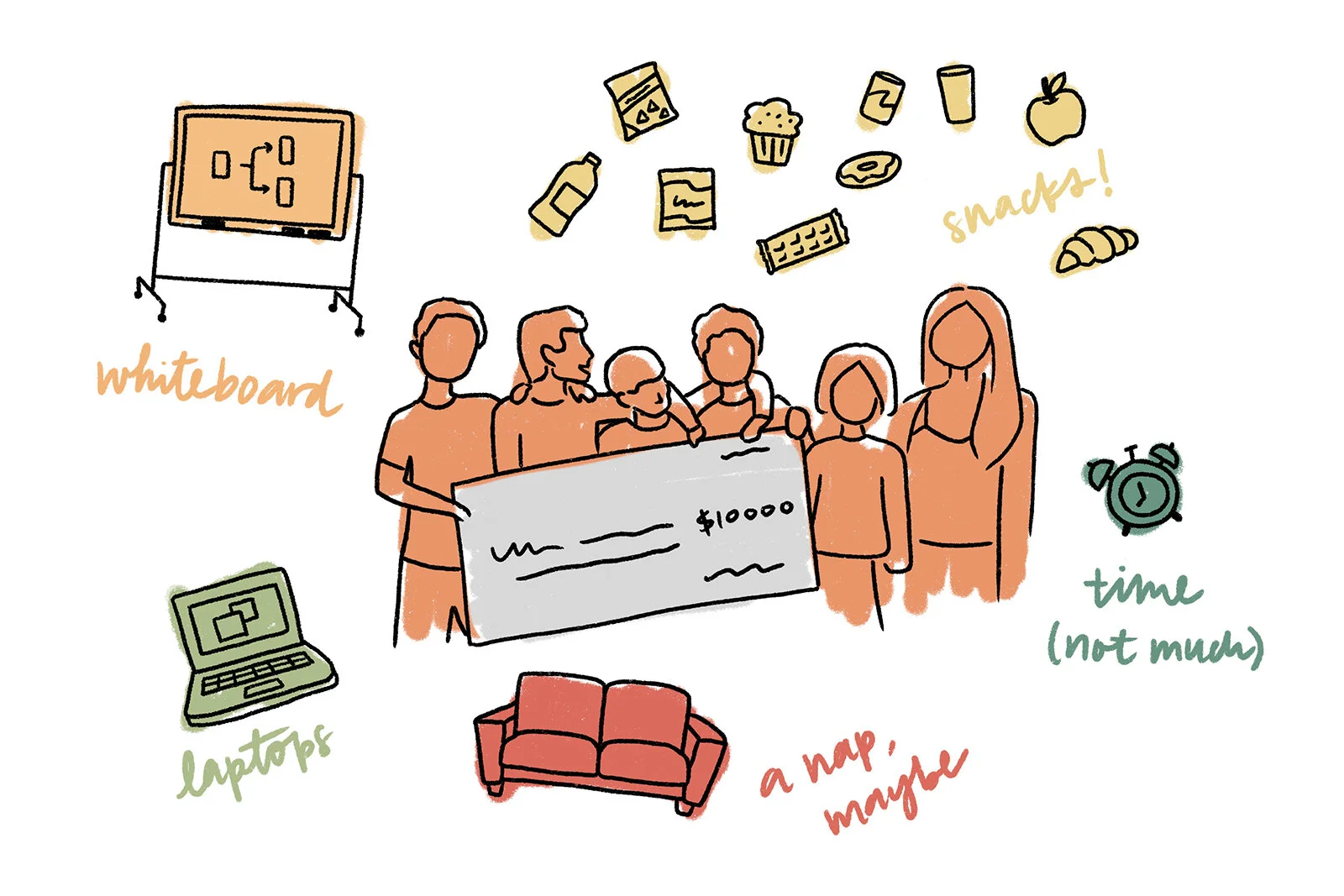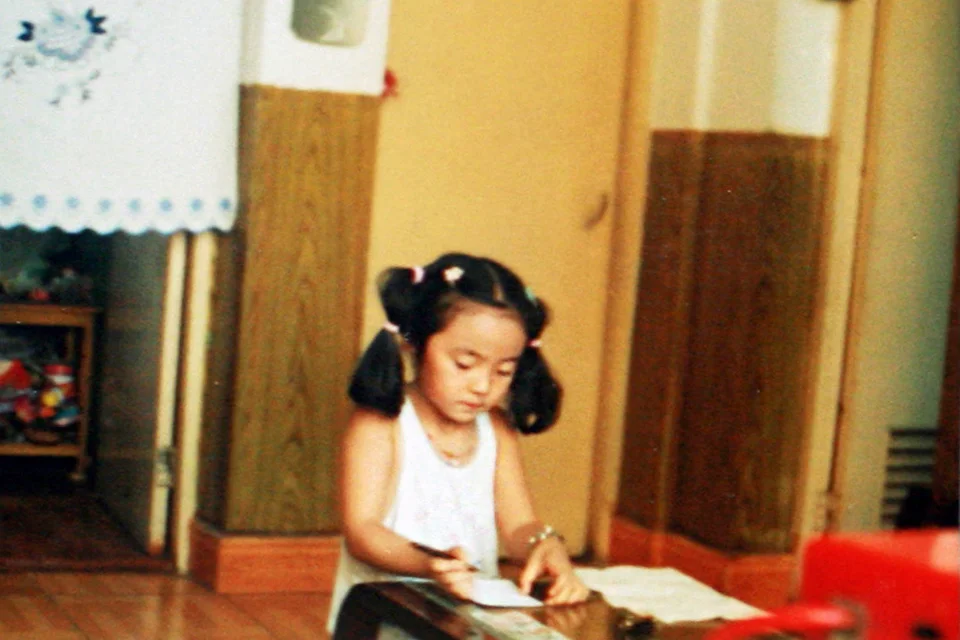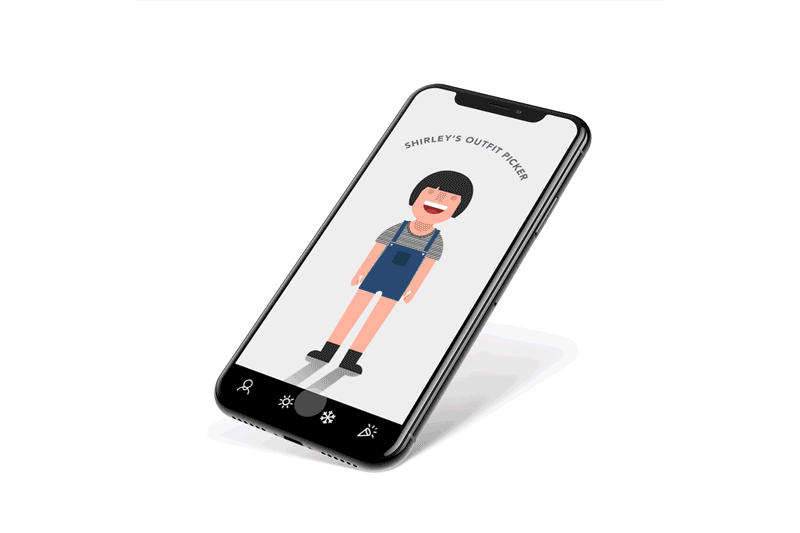My DIY Wedding: How I did my own flowers
For my wedding, I wanted fresh flowers but didn’t want to pay exorbitant prices for something that gets used for one day. I also had a specific vision for my color palette, and don’t like typical uniform supermarket arrangements. Working within these constraints and personal preferences, I decided to do florals myself. I’m a designer, and floral design is design. How hard could it be?
Learning how
7 years ago, I took a class in college that taught me the basics of traditional floral design: tools required, how to work with flowers, how to keep them fresh, basic composition of florals and greenery.
But it’s been a while since I picked up some clippers, so in the weeks leading up to the big day, I watched every Mikey Putnam video I could find on Youtube. He taught me the importance of color cohesion, as well as the categories of flowers to feature: face flowers, filler, foliage, structural, gestural, etc. This HGTV feature with Mikey in particular came out at the perfect time, and was fundamental in introducing me to a newer, trendier style of natural floral design.
Erin Benzakein’s bestselling book Floret Farm’s A Year in Flowers (borrowed on Libby!) then expanded my knowledge of floral design theory and gave me a refresher on techniques to assemble centerpieces, bouquets, and types of products. Her guides explained how many flowers she used per arrangement, which helped me figure out how much I needed to order.
My flower sourcing plan for my first visit to Trader Joe’s. Centerpieces and bridal party bouquets were first priority, while the bud vases, cake flowers, groomsmen boutonnieres, and corsages were optional.
Supplies
What I used
clippers (one per person)
vessels to hold arrangements
floral foam (although I learned too late that these are carcinogenic, and that chicken wire is better)
floral tape (clear + green variations)
flower food (I used all the small packets that came with bunches)
Crowning Glory liquid shield
lots of buckets
Optional
floral wire, to give delicate stems and boutonnieres structure
ribbon, to wrap bouquets
spinning cake stand
All purchased from Amazon or local floral wholesale supply stores.
I found vessels that matched my Italian villa venue on Facebook Marketplace, then bought more from the original wholesaler in the Bay Area. I love that they look like weathered terracotta clay, but much more lightweight and sturdy. (Edit: Meghan Markle used these exact vessels in her Netflix series!)
Gathering flowers
4 days before flower pickup, I went to the local Trader Joe’s at opening to see what they had to offer before placing my order. Their inventory is seasonal and highly variable based on location and supplier, so for someone like me who didn’t know what was in season and what any of the flowers are called, seeing the selection (and names) in-person helped me figure out what I wanted. For example, I originally wanted to use lots of in-season peonies, but realized the variety available was too big and too purple-y to add to my warm hue centerpiece composition.
Keep in mind Trader Joe’s gets flowers delivered daily, and places their orders 3 days in advance. So pre-ordering is the way to go if you want to ensure they’ll have enough of what you want the day of your pickup. No pre-payment required. Shoutout to Luis from the Whittier location for patiently writing down my entire order, down to the color preferences, and setting asides the bunches I wanted the morning of pickup!
Flowers I purchased for centerpieces:
Filler: Carnations, mini spray roses, chamomile, roses, smaller mums
Face: Dahlias, larger mums, daisies
Gestural/textural: Calla lilies, tulips, craspedia, veronica
Foliage: Green dragon, olive, eucalyptus, some other assorted greens that I liked
A few flowers I pre-ordered (ranunculus, ememurus, white sea lavender) were no longer in-stock just 4 days later :(
For the rest of the foliage, I ordered a 25’-long garland from Costco, and foraged the rest of what I needed from overgrown bushes at local parks and friends’ yards. For example, the flower girl tossed rose petals picked fresh my parents’ neighbors’ yard just two hours before the ceremony.
Stood here for an hour like a madwoman comparing flowers and figuring out my order.
Picked it up 4 days later, and substituted the out-of-stock flowers with what was available to make sure I had enough.
This is where lots of buckets come in handy!
Went home and immediately prepped all the flowers: opened packages, re-cut stems on the diagonal, stripped off leaves, and put them into clean water. This actually a pretty lengthy process but super important
Foraged for foliage outdoors.
Design
Next step is assembly. This is where the fundamental design concepts of proportion and composition come into play. Start by cutting your floral foam and soaking them to place into the vessel. Tape it down, then start with layers of foliage to build out the structural skeleton in horizontal and vertical directions. Then start filling in with filler flowers to hide the foam and tape (the “mechanics'“), adding face flowers to the eye level, and finally, incorporating gestural accents to add a touch of whimsy.
Use different sizes of flowers and foliage to create interest and draw the eye around the arrangement. There are supposed “rules” in floral design but I just varied it up between flower size, height, texture, flower and greens, so there is never too much of the same same in the same area. Keep the eye moving, and make the arrangement look like nature just grew and spilled out of the vessel. For centerpieces, I recommend getting a spinning cake stand to make it easy to work your way around all 360 degrees.
Finally, spray your complete arrangements with Crowning Glory to help preserve it for the next however many days.
My first sample centerpiece. (I was so proud!)
The process began to create 11 more.
Shirley’s first arrangement (with calla lily Shrek ears!)
Thank you mom, Shirley, Karen, and Simon for helping out! Truly takes a village.
Making the most out of little
For the rest of arrangements, I kept it simple. We didn’t have much flowers left by the end of our centerpieces, but had enough to fill in bud vases, make small boutonnières, and allow the photographer to arrange some flatlays. For the bridesmaids bouquets, I matched the flowers to their dresses instead. The matching bouquet look feels really dated, and would’ve taken much more time to assemble. I had also set aside some special flowers for my own bouquet, which I assembled the morning of the wedding. I finished it off with a delicate ribbon, which added a modern artsy flourish.
I didn’t need a grand floral arch (nor do I know how to make one), so I came up with the idea of a easy-to-disassemble grounded floral arch for our ceremony. And it was perfect. Then, during cocktail hour, we moved them into the reception area to adorn each of the dining tables. Who doesn’t love reusable components?
All in all I spent less than $400 on flowers and $250 in supplies, a majority of which can be resold and reused. This yield 2 grand arrangements, 10 centerpieces, 1 bridal bouquet, 8 bridesmaid bouquets, 3 boutonnières, and decor for bridesmaid hair and detail shots.
The wedding party helped make boutonnières and wrap the bouquets with ribbon onsite.
We used up the leftover flowers for bud vases.
The arrangements lined the “altar” during the ceremony…
And got repurposed into table centerpieces during the reception! Voila!
I wasn’t afraid to use color.
This palette accentuated the villa perfectly.
Lessons learned
Buy more than one pair of clippers! Everyone who’s helping out needs one
Your workspace will get dirty
Don’t let leaves sit in water. Bacteria will grow and start rotting your flowers
Not every arrangement needs to be symmetrical. e.g. Grounded statement pieces don’t need to look nice from all angles like a centerpiece does.
Color is SO important! This was the one thing I didn’t learn in my college floral design class, which is why I was never satisfied by my class projects
Make it funky. Try out flowers other than the common roses, carnations, gerbera daisies, baby’s breath, leather leaves, lilies, etc. The more unrecognizable the more expensive the arrangement looks
Calla lily and tulip stems are super fragile. You need to pre-create the hole in foam, or use wire to strengthen (I was too lazy)
Keep flowers out of the sun and in clean water as MUCH as possible. Refrigerate what you can (boutonnières, rose petals, etc). My bouquet got a bit droopy because it didn’t sit in water at all times, and I forgot to spray it at its freshest. Also the Costco garland completely browned by dinner time because it sat out in the sun — I was aghast when I visited my guests at that table.
Shop for flowers as early as possible to get the best pick at the available variety, whether that’s Trader Joe’s or the flower market
I’m still shocked that I pulled this off. It’s one of the craziest design projects I’ve attempted with extremely limited time and high stakes. But what’s a DIY wedding without a challenge? Thank you friends for doing such a great job without any prior experience, and dealing with my bossy ass.
Our florist van aka Simon’s Honda CRV. Thank god I married a man who’s good at figuring out transportation logistics.
Cleaned up the arrangements a day after the wedding, where they still looked good enough to sell!
Bonus round
My in-laws threw us a Chinese wedding reception banquet two weeks later and I made another floral statement piece for the welcome table. Repeated the process with the same tools but a different color palette. And in addition to Trader Joe’s, I also visited the San Francisco Flower Market for unique red flowers (pricier than expected). Added some pussy willow for Chinese prosperity, because why not experiment!
Thank you, nature, for all this beauty! And allowing us to be creative with it.




















































I’m so extra I learned HTML and CSS for my wedding. Another project where I got to learn and build and learn and build — my favorite thing to do.